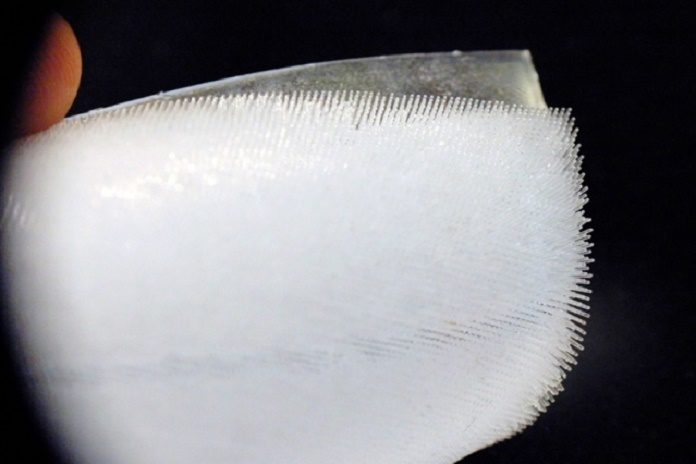Our body consists of delicate, infinitesimal rugs of hair. These bushy projections restraint to delicate surfaces, curve and the wind along with the streams of the liquids.
MIT scientists found a way to show how these tiny, soft beds of hairy insides will bend in response to fluid flow. Through their method, they found that stiff hairs tend to stay upright in a fluid flow.
In reality, there is a little spot where hair bent straight. They grow with elasticity- neither rigid nor too soft that affects as the fluid flows through them. When such hair straighten themselves when the fluid flow against them. In this configuration, the hairs can slow a fluid flow, like a temporarily raised grate.
Scientists noted study sheds light the role of hairy surfaces in the body. For example, the scientists set the angled hairs in veins and the intestine tracts may twist to shield encompassing tissues from abundance liquid streams.
Anette (Peko) Hosoi, the Neil and Jane Pappalardo Professor of Mechanical Engineering said, “At very small scales, it’s very hard to design things with functionalities that you can switch. These angled hairy insides can be used to make a fluid diode that switches from high resistance to low when fluid flows in one direction versus another.”
MIT postdoc José Alvarado said, “There’s been a lot of work done at the large-scale, studying fluids like wind flowing past a field of grass or wheat, and how bending or changing the shape of an object affects impedance or fluid flow.”
“But there’s been very little work at small scales that can be applied to biological hairs.”
Scientists then discovered small hair in response to flowing fluid. For that purpose, they fabricated soft beds of hair by laser-cutting tiny holes in sheets of acrylic. They then fill holes with liquid polymer. Once, the holes solidified, the polymer hair beds gets removed from the acrylic molds.
In such way, scientists fabricated multiple beds of hair with the size of a small Post-it note. They then analyzed the way hairs responded to flowing fluid, by placing each bed in a rheometer. The rheometer is an instrument consisting of one cylinder within another. The cylinders were typically filled with liquid. Scientists then rotated the inner cylinder and measure the torque generated when the liquid drags the outer cylinder along.
In experiments, scientists lined the rheometer’s inner cylinder with each hair bed and filled the space between cylinders with a viscous, honey-like oil. They then measured the torque and how fast the inner cylinder was spinning. Based on it, scientists calculated the impedance, or resistance to flow, created by the hair.
Alvarado said, “What is surprising is what happened with angled hairs. We saw a difference in impedance depending on if the fluid was flowing with or against the grain. Basically, hairs were changing shape, and changing the flow around them.”
Next, to characterize the behavior of soft hair, scientists developed a mathematical model. They used a formula that takes into account variables such as the fluid velocity and hair dimensions.
They found that if the rescaled velocity is too low, hairs are relatively resistant to flow and bend only slightly in response. If the rescaled velocity is too high, hairs are easily bent or deformed in fluid flow. But right in between interesting physics start to happen.
Alvarado says, “This new model can help engineers design microfluidic devices, lined with angled hairs, that passively direct the flow of fluids across a chip.”
Hosoi said, “Microfluidic devices such as hydraulic diodes are one essential piece to developing complex hydraulic systems that can ultimately do real work.”
“Computers and cell phones were made possible because of the invention of cheap, solid-state, small-scale electronics. On hydraulic systems, we have not seen that kind of revolution because all the components are complex in themselves.”
“If you can make small, cheap fluid pumps, diodes, valves, and resistors, then you should be able to unleash the same complexity we see in electronic systems, in hydraulic systems. Now the solid-state hydraulic diode’s been figured out.”
